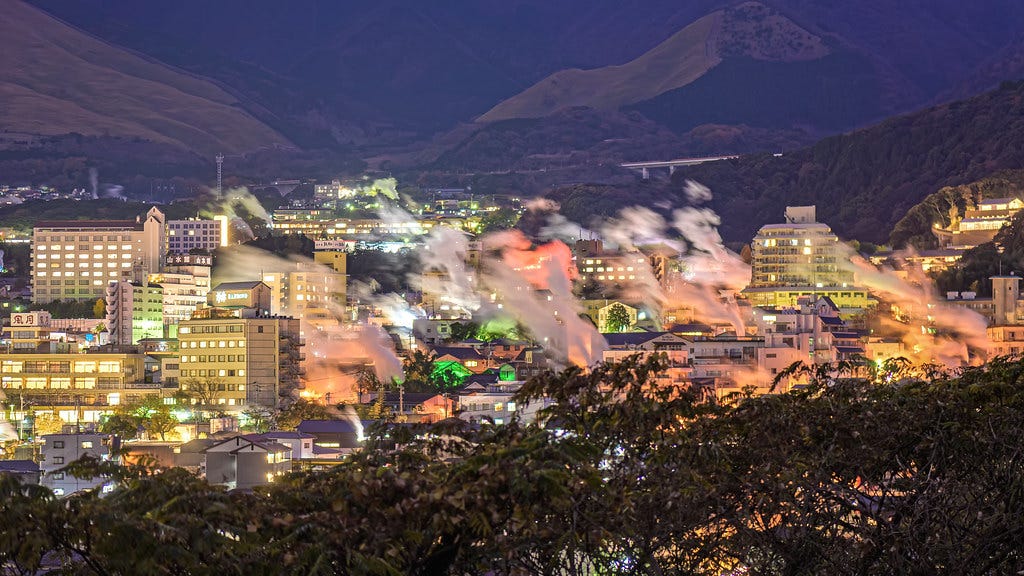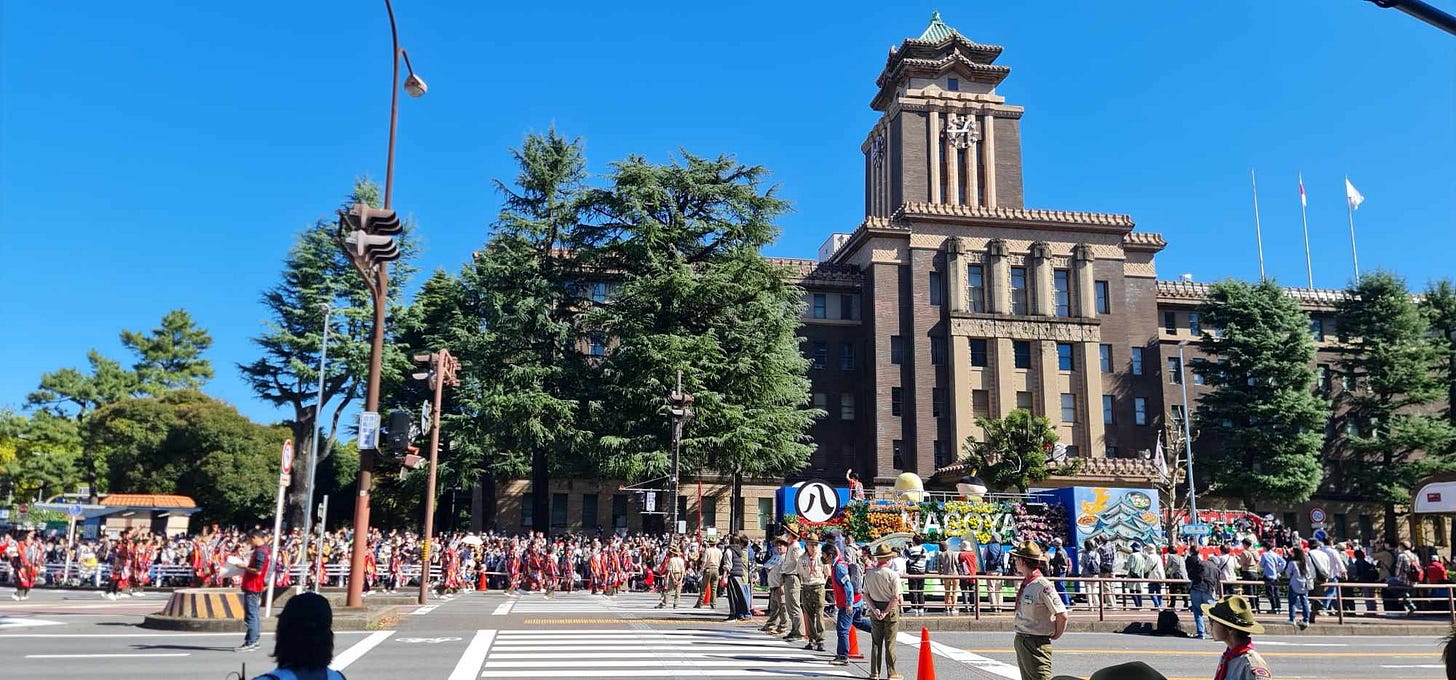Sister cities have always been a concept that didn’t click for me. Beyond propping up the plaque creation industry, what do two cities dotted across the globe have anything to say to each other?
I think of my hometown of Sydney partnering with Florence, Italy, and can hardly see any connections that would mark them as sisters. Sure, Michaelangelo’s David is world-famous in Florence, and there are lots of people called Michael and David in Sydney, but that hardly seems reason enough. They hardly share any genetic links, either culturally, demographically or economically.

The same could be said of any number of Sydney’s other sister cities, including Nagoya, Japan. What I hope to do in this post is to redraw the world’s familial lines and redefine what a sister city should be. Nagoya will get the honour of finding that they have a sister they never knew.
Getting names right
The term “sister cities” actually is a culturally sensitive phrase for certain geographies. It’s too distant for the Europeans, who prefer the term “town twinning”. Presumably many places in Europe are eerily identical with very similar traits like a big church named after a Catholic in the heart of a historic old town, circled by a scenic river. Still, considering there are worse synonyms for “sister”, “twin” is not the most offensive faux pas.
When we reach the Japan-China relationship, the familial closeness is no longer found, with “friendship cities” being the acceptable nomenclature. It turns out that by suggesting sister cities, you can raise a family feud over who is the “older” sister (city) and which is the “younger” (and therefore somehow less important). While fraught with turmoil, this arrangement can still yield benefits, similar to how maintaining relationships with your own family can be stressful but sometimes rewarding.
Despite many existing sister city arrangements seemingly drawn up on a whim, there are some that we can gain inspiration from. First off are the novelty name cities.
Novelty names
For whatever reason, every country seems to have a few locations that are named in an unusual manner. Usually these are places that pass under the spotlight as they are tiny towns with little to show for but their name. It is their name is what puts them on the map. I think of Bland in Australia, sustaining a population of about 6000 people and an automatic entry in all internet lists of funny towns.
It must have been after the millionth listicle when towns bearing unusual names decided to join forces. In 2012, the towns of Bland Australia, Boring USA, and Dull Scotland finally recognised their shared kinship and formed their sister city alliance. Thus, the Trinity of Tedium was formed. Each are able to share advice with their brethren that only the other municipalities could help with, such as preventing stolen signs and promoting name-based tourism.
In all this, we can learn how sister cities with shared heritages and goals can actually help each other to achieve things beyond their dullest dreams.
Japanese ones worthy of praise
Perhaps the city or town that has worked out how to create mutual value for their lot in life is in Beppu in Ōita Prefecture. What Beppu is most domestically known for is their bathing hot springs and onsen culture. Now, if you know Japan, you’ll know that many cities and towns pride themselves on this characteristic, so much so that lists of the hundred best onsen towns are produced annually.
For Beppu, a city that frequently graces such publications, the goal is to distinguish themselves from the other 99 bathwater contenders. This cannot be easy in the domestic market, so Beppu wisely turned to the international world to build their sister cities.
The setting is much like any heist movie. Insert fast-paced action music as the montage of team assembly occurs, with late 20th Century Beppu officials contacting others across the world wherever geothermal activity was discovered.
We pan to the most obvious counterparts. Found in Britain, the City of Bath. Natural allies, this coalition ensures that Beppu is present at all UK discussions on the topic of baths. The same tactic of recruiting other regionally famous bathing locations from Rotorua in New Zealand and Yantai in China has cemented them as a now internationally known city of bathers. They even hosted the world’s first international summit in 2018 on ONSEN. By leaning into their hot spring culture and finding other towns with naming and historical links to bathing, Beppu and Ōita Prefecture has been able to make the plea to international hot water lovers that they are welcome here.
The Nagoya Fix
Beppu is an example of working out your city strengths and finding supportive partners. However, the same is not true for many other so-called siblings.
Sydney has precious little to teach Nagoya or vice versa. Beyond the general, “Hi I’m also a big city” and “we also have a train network”, they can’t swap tips and tricks like the aforementioned Trinity of Tedium. What Sydney and Nagoya really need are new sisters. For Nagoya, I think I’ve found the perfect candidate.
First, a little about Nagoya.
Nagoya is basically in the exact middle of Honshu (main island) of Japan. As the third main city of Japan, it is the key go-between of the two even bigger metropolises of Tokyo and Osaka. It’s frequently called Chūkyō, or “middle capital”. As a tourist destination, it is overlooked due to the city being an industrial hub, more famous for cars, ships and planes being built there than such vehicles visiting in. While still featuring many culturally significant landmarks, much of Nagoya was destroyed during WWII and subsequently rebuilt.
Long story short, this is a major city that marked the industrial might of their countries. A city that is inextricably linked to the automobile industry. Somewhere that is in the “heartland” of their country. Honestly, it’s a place that is forgotten by the cities on the East and West Coasts.
Does this remind you of any place?
Put your hands up for Detroit
A lovely city.
While I’m not the first to draw this comparison, I want to propose that these two siblings finally use the sister cities terminology for good. To start with, both Detroit and Nagoya are the automotive engines of their country. One builds Toyotas, the other, American muscle cars. Despite their outsized economic output, both have been stigmatized as industrial cities and left as “flyover” country. In my mind, this already qualifies them as relationally closer than other sibling cities.
So what can be achieved given they share these traits? To me, cross-cultural exchanges can actually be useful as they can both benefit from each other's experiences. Rather than Nagoya asking how Sydney deals with their tourists’ fear of sharks, they could consult Detroit on efforts to revitalise of their downtown district.
I’m aware that previous attempts to connect these motor cities together have occurred with disheartening news. Once upon a time, there was a direct flight linking the two cities, designed for the premium business flyer. Even this link was severed by the onset of a global pandemic. Such ties could be restored as the new foundation of this joint venture, marking an age of thoughtful sisterhood between agglomerations of people.
Make your own sister city
If you think this task of reuniting two long-lost family members is worthwhile, these are the steps to take.
Documentation. Probably the main step, if you want formalised relationships. According to the governing body Sister Cities International, they “recognise a sister city relationship when mayors or highest elected officials from the two communities sign an agreement to become sister cities”.
There is a lot of leeway, though. “You should first contact your local sister city organization and talk to them about their process.”Marketing. I suppose this is equally important. You want people to actually know about this collab, otherwise it’s a lot of signing papers for nothing.
Successfully building a brand is central to having people know about, visit, and even move to your chosen town or city. While this may be abhorrent to the NIMBYs, it is usually part of the city council’s job to grow (see below for an article about when growth goes too far).
Places like Beppu show us that thoughtful planning of who you choose to connect with can be what cements you as a host of the next international summit. With careful town partners, cross-pollination of ideas can be achieved, rather than a forgotten city halfway across the globe.
Let me know in the comments if you have sister-city pairings that you want to make happen, for your town or any other!






Interesting as always ! I like how you bring our attention to less common topics.
Detroit is a decent choice for Nagoya, yet the former has qualities (deep stains?) that I think make the partnership untenable. Gun deaths, crack smoking, ice age conditions, and urban rot top this list. Yes, they both have cars and are mid country but is that enough? I think Nagoya can hold out for better...like Frankfurt, say!
I agree fully with you though that the entire concept of Sister City has highly questionable value. lol.